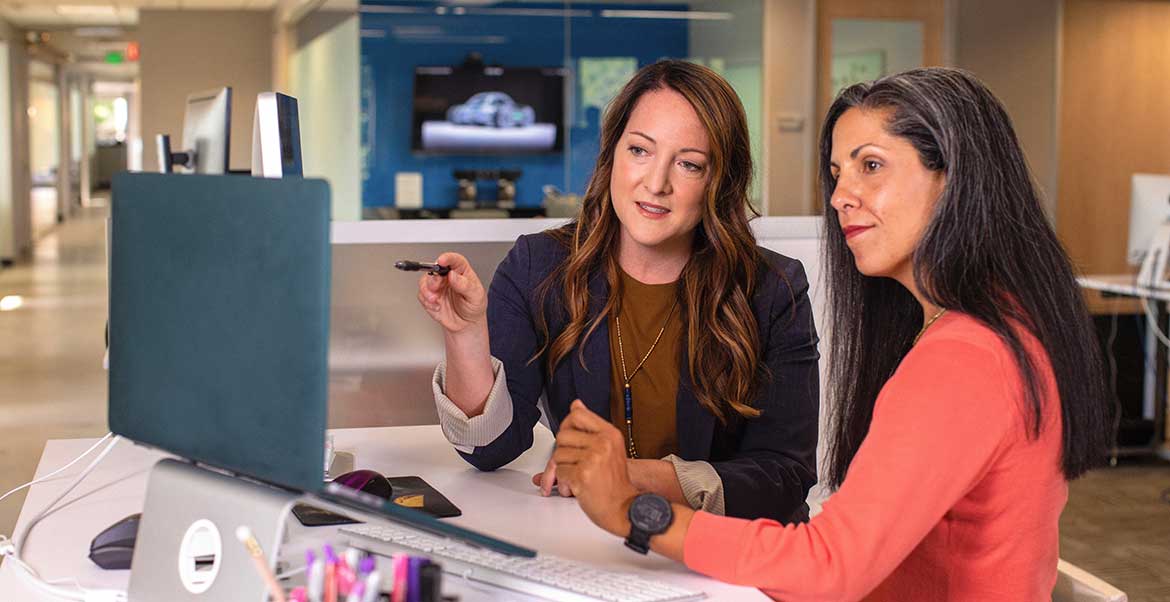Breaking Down Barriers to Health

How Curally helped a participant overcome obstacles to the care she needed
When Maria first met with her Curally nurse, she was desperate. She was working two jobs to make ends meet, struggling to keep up. Because she spoke only Spanish, she was unable to find a doctor nearby who could understand her; instead, she was traveling to Mexico for care and medications. Now her health problems were causing her to miss work – and risk eviction from her home and repossession of her car.
“Maria’s case is an example of the social determinants of health,” says Curally Medical Director Dr. Ernie Vesta. “She couldn’t find the medical help she needed nearby, but without that she was unable to work, and so she was close to losing everything. Everybody knows this is a major problem in healthcare today, but it’s so rarely talked about.”
Fortunately, Curally was uniquely positioned to help Maria achieve a health breakthrough.
Because Maria’s employer had a large number of Spanish-speaking employees, Curally engaged a Spanish-speaking nurse, Erin, to help participants manage their care. Maria was apprehensive about the program – her struggles navigating American healthcare had left her skeptical that anyone could or would help her – but Curally's team was persistent.
“You can either make time for yourself now, or your condition will make time for you later,” said Nurse Erin. Maria agreed to begin care.
The first step was understanding her conditions. Maria’s primary issue was diabetes, which had caused high blood pressure, significant damage to her feet, and other symptoms. Her job on a factory floor left her standing in cold, wet conditions for 9 hours a day, only making her condition worse.
Critical Risks of Unmanaged Diabetes
Left untreated, diabetes primarily affects the vessels:
- Large vessels, leading to heart attack or stroke
- Small vessels, found in the retinas, kidneys, and feet, leading to blindness, kidney failure, and amputations
To properly manage her health, she needed a local doctor. Nurse Erin found one doctor in town who would agree to take Maria on as a patient, but only if Erin came along as a translator. She agreed without hesitation – that's the Curally way!
A major problem in Maria’s struggle with diabetes was that she didn’t even own a machine to track her blood sugar, a necessity for someone in her position. Curally purchased the equipment Maria needed and gave it to her at no charge, providing training to her and her daughter so she could get back on track. Maria was also having difficulty affording her medication and refilling them regularly, so Curally’s team helped her set up mail-order prescriptions that were more affordable and would last for three months at a time.
It led to steady progress. Her feet began to heal and she was able to return to work. She began to lose weight thanks to an improved diet, and her blood sugar levels showed dramatic improvement.
At his most recent meeting with Maria, Dr. Vesta was thrilled with the difference. “Her whole countenance was changed from when we first met,” he said. “She went from missing work and being afraid of losing her job because her health was in such bad shape, to this bright, beaming person again.”
Curally continued working with Maria and her doctor, advocating for her to reduce the number of prescriptions she needed as her condition improved, and helping her find the most affordable, effective medication available. The most important ingredient along Maria’s health journey, however, has been trust: as Dr. Vesta says, “You can’t get someone to respond to your advice if they don’t trust you. Trust is only built by getting to know somebody, and that’s why we were able to make a difference for Maria.”
The Curally Difference
Maria’s case is a prime example of the barriers to care that all too many people face. Her barriers were significant – language, job insecurity, financial concerns. “She couldn’t find a physician who would listen to her, so she stopped looking,” says Dr. Vesta. “She considered that no one was on her side, so she didn’t want to tell anyone how sick she was. How bad would it be to know you have a chronic condition and just decide you’re going to live with it until you don’t live anymore?
That’s why we have the mission we do at Curally, to help every person get the support and care they need.”
Wrapping Up
Contact us to learn how Curally can help find high-risk individuals in your organization and help them achieve the health they deserve!
The Participant
Age:
40s
Gender:
Female
Profession:
Factory worker
Conditions managed:
Diabetes, high blood pressure, Depression
Blood Sugar Levels
A normal range for blood sugar levels can fall between 80 and 140 mg/dL. Readings while fasting above 130 usually indicate diabetes. Maria’s blood sugar levels were dangerously high, but have come down to normal levels and stayed there for years after entering Curally’s care!
Before Curally: >380
After 1 Year of Management: 140
Current Levels: 120
